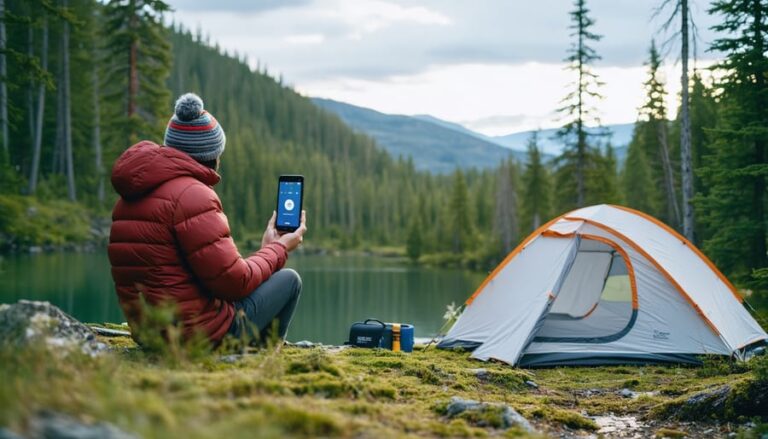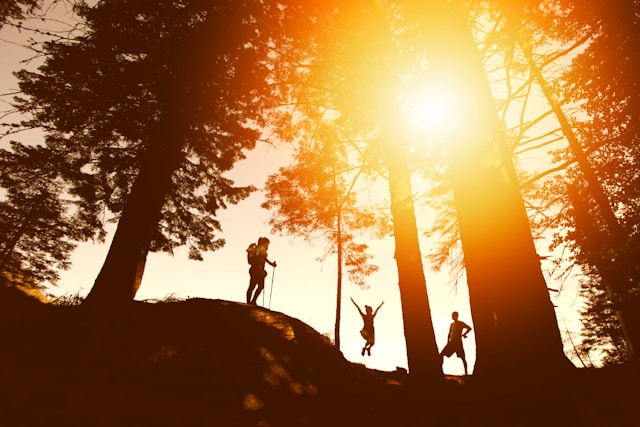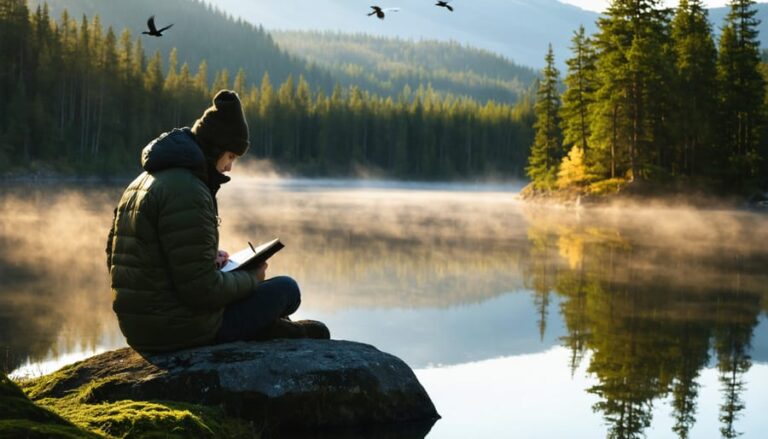Soar above Ontario’s pristine wilderness to capture breathtaking aerial landscapes that tell a compelling story of our province’s natural beauty. From the rugged Canadian Shield to the sweeping shorelines of the Great Lakes, discovering epic drone spots in Ontario unlocks a whole new perspective on familiar terrain. Whether you’re chasing golden hour light across Algonquin’s rolling hills or documenting the dramatic cliff faces of the Niagara Escarpment, aerial photography transforms ordinary landscapes into extraordinary works of art. As more photographers take to the skies, this emerging artform combines technical precision with creative vision, revealing hidden patterns, textures, and compositions that ground-level photography simply can’t capture. Join the growing community of aerial photographers who are redefining how we see and share Ontario’s magnificent outdoor spaces, while respecting wildlife habitats and following drone regulations that protect our natural heritage.
Best Ontario Parks for Aerial Photography
Algonquin’s Vast Wilderness
Algonquin Park stands as one of Ontario’s most photogenic parks, offering aerial photographers an endless canvas of pristine wilderness. The Highway 60 corridor presents stunning opportunities year-round, with Lake of Two Rivers and Rock Lake providing mirror-like surfaces for reflection shots during calm mornings. In autumn, the lookout points near Track and Tower Trail showcase a spectacular tapestry of red maples and golden birch trees that’s particularly striking from above.
For winter enthusiasts, the frozen lakes create abstract patterns in the snow, while the stark contrast between evergreens and white landscapes offers dramatic compositional possibilities. Spring brings flooding to the lowland areas, creating temporary waterways that snake through the forest like silver ribbons.
Pro tip: The Smoke Lake area is particularly photogenic during sunrise, when morning mist rises from the water, creating ethereal scenes perfect for aerial capture. Remember to visit the park office first to obtain necessary permits and review current drone regulations, as these may vary by season and location.

Killarney’s Quartzite Ridges
From high above, Killarney’s white quartzite ridges create a stunning contrast against the deep blue waters of Georgian Bay, making it a dream destination for aerial photographers. These ancient rock formations, dating back billions of years, appear almost luminescent when captured during golden hour, particularly along the La Cloche mountain range. The crystal-clear lakes nestled between these ridges offer perfect reflections that create mirror-like compositions in your aerial shots.
For the most dramatic results, try positioning your drone to capture the interplay between the white ridges and the pink granite outcrops that dot the landscape. The best vantage points can be found near George Lake and Killarney Lake, where the quartzite cliffs rise dramatically from the water’s edge. Early morning mist often clings to the valleys, adding an ethereal element to your photographs.
Remember to maintain a respectful distance from wildlife and follow park guidelines when operating your drone in designated areas.
Bruce Peninsula’s Dramatic Coastline
From above, the towering limestone cliffs of the Bruce Peninsula create a photographer’s paradise, with their dramatic white faces contrasting against the crystal-clear turquoise waters of Georgian Bay. The coastline’s rugged beauty truly comes alive when captured from the air, revealing hidden coves, sea caves, and the iconic Flowerpot Island formations in stunning detail.
For the best aerial shots, position your drone just after sunrise when the morning light bathes the escarpment in a golden glow. The interplay of shadows along the cliff face creates compelling depth and texture in your images. Try capturing the natural patterns formed by the ancient rock layers and the swirling waters below.
Some of the most photogenic spots include Indian Head Cove, the Grotto, and Little Cove. The geological formations here tell a story millions of years in the making, and aerial photography helps showcase their massive scale and intricate details. Remember to maintain a safe distance from the cliffs and respect local drone regulations to protect this unique ecosystem.
Essential Equipment and Legal Requirements
Drone Requirements and Permits
Before taking flight with your camera, it’s essential to understand the legal requirements for drone photography in Ontario’s parks. First-time pilots should familiarize themselves with drone photography basics and obtain the necessary certifications.
In Ontario, you’ll need a drone pilot certificate from Transport Canada for any drone weighing between 250g and 25kg. There are two types of certificates: Basic Operations (flying in uncontrolled airspace) and Advanced Operations (flying in controlled airspace). Most provincial parks fall under basic operations, but always verify the airspace classification before flying.
Additionally, you’ll need specific permits from Ontario Parks for commercial photography. Even if you’re shooting for personal use, many parks require advance notice and permission. Pro tip: Contact the park office at least two weeks before your planned shoot to secure necessary approvals.
Remember to respect wildlife and other visitors – maintain minimum distances from animals, stay away from populated areas, and avoid flying during busy park hours. Keep your drone in visual line of sight and follow park-specific guidelines for designated drone zones. Some sensitive ecological areas may be completely off-limits to drone photography.
Camera Equipment Selection
Choosing the right gear can make or break your aerial landscape shots in Ontario’s stunning wilderness. For starters, a reliable drone with a high-quality camera is essential – the DJI Mavic 3 or Air 2S are excellent choices, offering outstanding image quality and reliable performance in our variable weather conditions.
Make sure your drone has a camera that shoots in RAW format and offers at least 20MP resolution for those crisp, detailed shots of our pristine lakes and forests. A set of ND (Neutral Density) filters is invaluable for managing bright Ontario sunlight, especially during golden hour over places like Algonquin Park.
Pack extra batteries – our vast landscapes deserve extended flight time, and you’ll want backup power for those perfect sunset opportunities. A tablet or large-screen phone makes framing shots easier than a small phone screen, and a sun hood is essential for bright days.
Pro tip: Invest in a hard-shell carrying case to protect your gear on those bumpy backcountry roads. And don’t forget a landing pad – it’s a lifesaver when taking off from uneven terrain or dewey morning grass. For those misty Georgian Bay mornings, pack a few microfiber cloths to keep your lens clean and clear.
Remember, lightweight and portable gear is key when you’re hiking to those perfect vantage points!

Composition Techniques for Aerial Landscapes
Pattern and Texture
Ontario’s landscape is a treasure trove of natural patterns and textures that truly come alive when viewed from above. From the repeating ripples of sand dunes at Pinery Provincial Park to the mesmerizing agricultural patchwork of the Holland Marsh, aerial photography reveals stunning geometric designs that are invisible from the ground.
In spring and summer, look for symmetrical patterns in farmers’ fields, where rows of crops create natural leading lines that draw the eye through your composition. The autumn harvest adds another dimension, with combine harvesters leaving intricate tracks that tell the story of the season’s work.
Water bodies offer exceptional opportunities for texture photography. Capture the delicate lacework of Georgian Bay’s shoreline, where thousands of tiny islands create a natural mosaic. Wind-swept waves on Lake Ontario form rhythmic patterns, while the countless channels of wetlands create organic, serpentine designs that change with the seasons.
Forest canopies are particularly striking from above, especially during fall when the color variation between different tree species creates a natural tapestry. Try shooting during the golden hour when long shadows add depth and dimension to the texture of the treetops.
Pro tip: Look for contrasting elements in your composition, such as the geometric patterns of human development meeting the organic shapes of natural landscapes. These intersections often create the most compelling aerial photographs.
Light and Shadow Play
The interplay of light and shadow is where aerial landscape photography truly comes alive in Ontario’s vast wilderness. The golden hours – just after sunrise and before sunset – offer photographers the most dramatic opportunities, casting long shadows across the landscape that create stunning depth and dimension.
During early morning shoots, you’ll catch the mist rising from lakes and rivers, creating ethereal scenes as sunlight filters through. The low-angled light emphasizes textures in forest canopies and rocky outcrops, making them appear almost three-dimensional from above. For the best results, position your drone to capture side-lighting, which reveals the subtle contours of the land.
Late afternoon light works wonders for photographing Ontario’s rolling hills and escarpments. The warm, golden light softens harsh shadows and adds a magical quality to your images. Pro tip: try shooting directly into the sun for spectacular backlighting effects, but remember to adjust your exposure settings to prevent overblown highlights.
Overcast days shouldn’t be overlooked either. The diffused light can be perfect for capturing the vibrant autumn colors of the Niagara Escarpment or the subtle details in wetland areas. For more dramatic effects, look for breaks in the clouds where shafts of light create spotlight effects on the landscape below.
Remember to respect wildlife and maintain safe flying distances, especially during dawn and dusk when animals are most active. The best shots often come from patience and careful observation of how light transforms the landscape throughout the day.

Seasonal Photography Tips
Fall Color Photography
Ontario’s autumn transformation creates a spectacular canvas for aerial photography, with vast forests displaying a mesmerizing patchwork of reds, oranges, and yellows. The best time to capture fall colors from above is typically from late September through mid-October, when the seasonal change peaks across the province.
For stunning aerial shots, try positioning your drone to capture the contrast between different tree species. Sugar maples produce vibrant reds, while birch and poplar trees contribute golden yellows to your composition. The Algonquin Highlands and Muskoka region offer particularly breathtaking opportunities, where rolling hills create natural layers of color that pop beautifully in aerial photographs.
Early morning flights often yield the best results, as the low-angle sunlight enhances the warmth of autumn colors. Look for areas where different forest types meet, or where bodies of water reflect the colorful canopy. Cloudy days can actually work in your favor, acting as a natural diffuser and preventing harsh shadows from obscuring the foliage details.
Pro tip: Use your drone’s height to advantage by capturing both close-up canopy details and wider landscape shots that showcase the full scope of fall’s transformation. Remember to check local weather conditions, as fall can bring unpredictable winds that affect flight stability.
Winter Wonderland Shots
Ontario’s snow-covered landscapes offer breathtaking opportunities for aerial photography, transforming familiar scenes into magical winter wonderlands. The key to capturing stunning winter shots is timing – aim for those crisp, clear mornings just after a fresh snowfall when the landscape is pristine and untouched.
For the best results, fly your drone during the “golden hours” around sunrise or sunset, when the low winter sun creates long shadows and warm light that accentuates the texture of snow-covered trees and rolling hills. The contrast between dark evergreens and bright snow makes for particularly dramatic compositions.
Keep in mind that cold temperatures can significantly affect your drone’s battery life. Always carry spare batteries and keep them warm in an inside pocket until needed. Consider using neutral density filters to prevent overexposure from the bright snow, and shoot in RAW format to preserve more detail in those tricky high-contrast scenes.
Look for unique patterns created by wind-swept snow, frozen lakes, and ice formations. Winter aerial photography also offers opportunities to capture human elements like ski trails, ice fishing huts, and snowmobile tracks that add scale and interest to your compositions.
Remember to check weather conditions carefully and ensure your drone can handle cold temperatures before taking flight.
Spring and Summer Highlights
Spring and summer transform Ontario’s landscapes into a photographer’s paradise, offering vibrant greens and stunning natural compositions perfect for aerial photography. As the snow melts and new life emerges, capture the dramatic contrast between thawing lakes and budding forests in early spring. The morning golden hour is particularly magical during these seasons, with mist often hovering over lakes and wetlands, creating ethereal scenes from above.
For the best results, plan your shoots for early morning or late afternoon when the light is soft and shadows add depth to your compositions. Summer brings endless possibilities with flowering meadows, lush forests, and crystal-clear lakes reflecting the sky. Keep an eye out for natural patterns in farmers’ fields and the mesmerizing textures of forest canopies.
Weather conditions are generally more favorable during these seasons, but watch for afternoon thunderstorms that could affect your flight plans. Sunrise shoots are ideal as winds are typically calmer, allowing for smoother drone operation. Remember to respect wildlife nesting areas and maintain safe distances from birds, which are especially active during these months.
Pro tip: After rain showers, look for dramatic cloud formations and rainbows, which can add spectacular elements to your aerial landscapes.
As we’ve explored together, aerial landscape photography offers a breathtaking new perspective on Ontario’s natural wonders. Whether you’re capturing the vibrant fall colors of Algonquin Park or the dramatic shorelines of the Great Lakes, remember that success comes from careful planning, technical knowledge, and respect for our environment.
Always prioritize safety and follow local drone regulations. Keep your distances from wildlife, respect quiet zones, and be mindful of other visitors enjoying the parks. The best aerial photographers are those who understand that preserving these natural spaces is just as important as capturing their beauty.
Consider joining local photography groups or workshops to expand your skills and connect with fellow enthusiasts. Many experienced aerial photographers in Ontario are happy to share their knowledge and favorite shooting locations. Remember that some of the most stunning shots come during golden hour or after a fresh snowfall – patience and timing are everything in this craft.
As you develop your aerial photography skills, challenge yourself to find unique perspectives and tell compelling visual stories. But most importantly, let your work inspire others to appreciate and protect Ontario’s diverse landscapes. After all, we’re not just taking pictures – we’re documenting the natural heritage that makes our province truly special.
So grab your gear, check the weather forecast, and head out to explore Ontario from above. Just remember: the best shots are those taken responsibly, with respect for both the environment and fellow outdoor enthusiasts.













+ There are no comments
Add yours